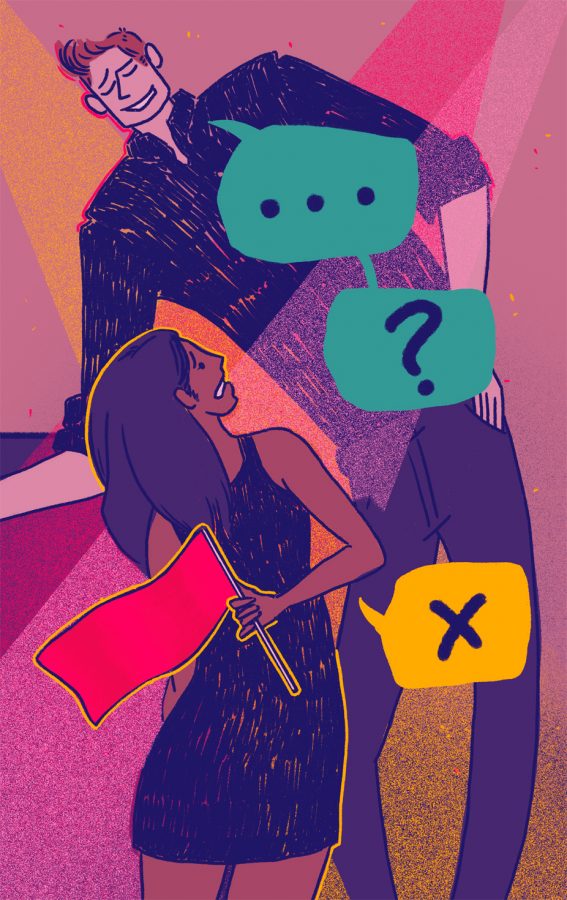Gestures worth a thousand words: body language and dating
Gestures worth a thousand words: body language and dating
February 11, 2019
When out at a bar or coffee shop, friends often have a “save me” signal to use when someone approaches and starts an unwanted conversation. This expression is a clear indication they want out of the situation.
Josh Hetherington, a licensed marriage and family therapist at the Chicago Center for Relationship Counseling, said it is important for women to have a signal to get out of uncomfortable situations.
Sometimes people will not pick up on body language cues or will keep trying to pursue a woman after she has tried to convey her discomfort, so having someone come and help could be beneficial, Hetherington said.
This could be avoided if people paid closer attention to body language, according to Hetherington and others who study relationships.
“Our brains are designed to understand what it means when somebody glares at you or when somebody turns their back on you,” Hetherington said. “Trust your first impression with that body language, and respect people’s body language.”
Common signs that someone is uncomfortable include being closed-in with their body, avoiding eye contact, slightly turning away or touching their neck a lot, said Bela Gandhi, founder of Smart Dating Academy, a service that teaches people how to find long-term partners.
But when their body language is ignored, Hetherington encourages women to speak up.
“A lot of women can be socialized to not just [say], ‘Get away from me, I’m uncomfortable,’” Hetherington said. “Don’t worry about the awkwardness or making the other person feel uncomfortable. It’s OK to be rude if you’re feeling like whatever is happening is not what you want.”
Sophomore arts management major Madeline McCarthy said she does not mind speaking up and telling someone when she feels uneasy.
“I’m very open, so I’ll probably just straight up tell them I’m not interested in them, versus playing games,” McCarthy said. “It is [beneficial] because then they get the message. You’re not wasting your time, and you’re not wasting their time.”
A study was conducted by Professor Albert Mehrabian at the University of California, Los Angeles during the ‘60s about first impressions and body language. It showed that verbal conversation accounts for 7 percent of first impressions, tone of voice accounts for 38 percent and body language accounts for 55 percent.
Junior early childhood education major Suzannah Meza said she fidgets when she is uncomfortable and notices others do as well.
“I try to make people very comfortable when talking to me, so when I notice [they seem uncomfortable], I start to either talk more or ask them questions,” Meza said.
Sophomore arts management major Audrey Huyghe said conversation is just as important as body language. To show she is not interested, Huyghe said she will turn the conversation to other things, such as her friends or other plans.
Body language is not only used when it comes to dating and meeting people; it also is vital in everyday life, such as for job interviews, Gandhi said.
During different interactions, Gandhi said to step back and look at how people are perceiving you. If people seem to be backing away from the conversation, reflect on yourself in order to learn what you can work on. She added that it is helpful to do research, and she tells her clients to videotape themselves answering questions to watch their nonverbal movements.
“Get educated on it. Read. Hire someone to help you,” Gandhi said. “All of these things are teachable, and they’re important.”








